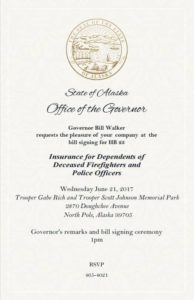License and Insure the Shooter, Tax the Firearms,
and Do It Through State and Local Governments.
© Allen D. Blume, 2017
During the 2016 political campaign season, virtually any discussion of ending endemic gun violence in the United States was tantamount to touching a subway “third rail;” with the promise of immediate political death to anyone seeking a solution to the problem. In the wake of the militant takeover of the Malheur National Wildlife Refuge in Oregon; the rapidly escalating firearms attacks in Kalamazoo, Michigan, Madison Township, Ohio, and Glendale, Arizona; domestic terrorist assaults on Planned Parenthood in Colorado Springs, Colorado; and county government workers in San Bernardino, California by “self-actualized” lone wolves, there were more demands to restrict Americans’ access to virtually all types of firearms. As with the slaughter of school children in Connecticut in 2012, Democrats in general, and to a lesser extent, the investment community, questioned the ready availability of such “weapons of mass destruction,” and, predictably called for restricting entire classes of firearms and limiting the availability of large capacity magazines. As expected, too, the Republican Party mouthed prayerful platitudes and offered nothing in the way of solutions to halt the rising body counts in every part of the United States.
Now, twelve months into 2017, following the particularly murderous assaults in Las Vegas, Nevada, with 59 dead and 441 injured; and Sutherland Springs, Texas, with 27 dead and 25 injured, the body counts continue to climb, the intensity of gun attacks are more savage, and the places of their occurrence appear even more randomly dispersed. The high-profile shootings that leave tens of people dead and hundreds more injured are signifiers of our increasing reliance on firearms to “settle scores” real or perceived. The data on places like Las Vegas or Sutherland or the 2016 Pulse nightclub shooting in Orlando, obscure other shootings that should be high profile – but are now simply the background noises of a society in turmoil.
|
Date
|
Location |
Killed |
Injured
|
|
Jan. 16, 2017
|
Miami, FL |
0 |
8 |
|
Jan. 27
|
Brownsville, TN |
0 |
10
|
|
Feb. 12
|
Caruthersville, MO |
1 |
6
|
|
Mar. 26
|
Cleveland, OH |
2 |
15
|
|
Apr. 16
|
Columbus, OH |
0 |
9
|
|
Apr. 30
|
San Diego, CA |
2 |
6
|
|
May 7
|
Chicago, IL |
2 |
8
|
|
May 20
|
Philadelphia, PA |
10 |
0
|
|
May 27
|
Washington, DC |
1 |
7
|
|
May 28
|
Phenix City, AL |
0 |
12
|
|
June 5
|
Orlando, FL |
6 |
0
|
|
June 9
|
Fort Worth, TX |
2 |
5 |
|
June 30
|
Little Rock, AR |
0 |
25
|
| June 30 |
The Bronx, NYC |
2 |
6
|
|
July 9
|
Cincinnati, OH |
1 |
8 |
|
Aug. 4
|
Lodge Grass, MT |
3 |
2
|
| Sep. 10 |
Plano, TX |
9 |
1
|
|
Sep. 24
|
Antioch, TN |
1 |
8 |
| Oct. 22 |
Lanett, AL |
2 |
7
|
| Nov. 14 |
Corning, CA |
6 |
12
|
(Source: Gun Violence Archive, Mass shootings, November 2017) [1]
The increasingly deep and wrathful divisions between those who favor an outright ban on firearms of any sort, and the barely checked threat of violence emanating from extremists in thrall to the National Rifle Association (NRA) guarantees deadlock and stalemate in addressing runaway gun violence in our society.
In the main, social justice liberals seek to address gun violence by mandating federal “one-size-fits-all” solutions that would create enormous and expensive databases on firearms, ammunition, magazines, and the piece-parts of firearms technology; while notably encroaching on the rights of individuals, states and/or communities to police themselves. Clearly, an increased emphasis on background checks is warranted, as evidenced in President Obama’s Executive Order, and increased attention from the Trump White House, requiring that individuals selling firearms at gun shows be licensed dealers and run background checks before selling a firearm to another person. However, the move is, at best, a tentative one and will certainly be tested by gun owner advocacy groups. Further, by seeking to reinstate semiautomatic weapons and magazine bans, Washington will again chase the minutiae of our violence problem to the exclusion of other and more effective solutions.
A careful reading of the Supreme Court decisions in Washington, DC v. Heller (2008) and McDonald v. Chicago (2010) offers a more direct and manageable solution: Mandate licensure and liability insurance for shooters at state and/or local government levels, and levy appropriate taxes on firearms, magazines, ammunition, and other adjunctive technologies.
Just as states regulate driver’s licensing, they can as readily use their existing infrastructure to manage firearms, even to the extent of using the same departments of motor vehicles to provide for licensure and examination. Set by state statute and/or multi-state compacts, controls can be put in place to provide for categories of gun ownership and use that are comparable with existing automobile, motorcycle, or commercial vehicle licensing, and that do not violate constitutional standards for possession and use of firearms. While there would be some initial state and/or local government outlay to set up certified training and testing gun ranges or contract for their services, this approach would obviate the need for expanding the federal bureaucracy on a fool’s errand to track down and enumerate every Picatinny rail, large capacity magazine, or MilSpec round.
Much is made of the so-called abuse of the regulatory power of the state, but taken at its most fundamental, such actions are a legitimate exercise of the policing powers inherent in every social compact. Justice Oliver Wendell Holmes’ often cited prohibition against crying “Fire” in a crowded theater is an example of the state asserting authority over the exercise of our First Amendment rights; and just as it is in the people’s and government’s interest to regulate explosives and hazardous materials, physicians and health care providers, pet and animal welfare, and restaurants and food vendors, state and local government licensure of shooters is well within the purview of that lawful exercise of regulatory authority.
By licensing the gunner instead of the gun, a more direct accountability can be established between the state and the individual, thereby requiring standards of competence and levels of certification that can be subject to periodic review and testing. An added advantage comes in requiring gunners of any level of competency to have insurance consistent with the same legal standard that requires a driver to have motor vehicle insurance. Again, there is no need to create an elaborate infrastructure, as it would be in the financial interests of insurance underwriters to offer policies for shooters that would include indemnification, risk management, and competency testing (i.e., mental health as well as weapons proficiency); and to avoid overlap and bureaucratization as noted earlier, state and local governments can make use of their existing agencies to manage the licensure process. Finally, and particularly for financially strapped governments, the taxes generated can be directed to mental health and violence reduction activities; or their general fund.
The upshot is that while there is a presumption, constitutionally derived, of an individual’s “natural right” to keep, carry, and use weapons in self-defense, it is not a right that comes without expressly stated costs. In short, for an individual to fail to exert prudent control over his or her firearms, the cost could range from insurance premium hikes to outright policy cancellation. An unlawful act by a licensed shooter could nullify the insurance policy and make the perpetrator subject to material and criminal damages, and failure to have insurance would be fundamental grounds to prohibit a gun sale. Further, an unlicensed person in possession of a firearm would be presumptively in violation of state or local law and subject to such fines and penalties as legislatures might impose. Finally, there will be an open policy consideration in whether a state or other jurisdiction can or will “grandfather” firearms owners or provide for incremental imposition of these proposed standards. Imperatively it is time to move the focus of the divisive gun rights/gun control debate off the center stage of national politics, and vest its solutions in the so-called “laboratory of the states.”
Such a process will not eliminate the role of the federal government to oversee regulation of fully automatic and/or exclusively military weapons and explosives, monitoring and enforcing laws against illegal trading in stolen firearms, and maintaining national registers of felons and others not permitted to own or possess guns.
This approach will not completely stop traffic in illegal firearms, nor will it absolutely keep firearms out of the hands of criminals or emotionally unstable individuals; but it will provide a matrix whereby law-abiding citizens are presumptively determined to be acting within the law in the exercise of their Second Amendment rights. An additional benefit can be realized by working through organizations such as the National Conference of State Legislatures (NCSL), the National Governors Association (NGA), the National Association of Attorneys General (NAAG), et al, to develop model legislation that provides for the specifics of any given gun-owning state or community; and acts presumptively in favor of firearms owners who might otherwise be in violation of a federal law because they own a firearm or other item subject to national regulatory controls. By licensing and insuring the gunner, a singularly more powerful means of controlling and compelling lawful behavior can be accomplished at a level well below those federally-based laws that would have to be, in the main, confiscatory.
Predictably, more extreme gun owners will claim government overreach and intrusion into their Second Amendment and/or unstated rights of privacy. The immediate and most absurd comparisons will be made to Adolf Hitler or Josef Stalin’s totalitarian gun laws, while conveniently overlooking that during the Vietnam War, virtually every person above a certain age in Communist North Vietnam was armed and instructed to shoot down American aircraft. Far more absurdly will be the argument that by making up lists of licensed shooters, the government will then easily be able to round up licensees. (In a nation of roughly 350 million people, a full third of the population are gun owners, and according to the Geneva, Switzerland-based Small Arms Survey, the leading source of international public information about firearms, the United States has “the best armed civilian population in the world,” with an estimated 270 to 315 million total guns. That’s an average of 89 firearms for every 100 residents. Information courtesy of the Statistic Brain and the Gallup Poll, 2015; and The Blaze, and Cleveland State University, 2013.) The point, of course, is that the likelihood of any such “roundup” borders on the absurd.
Notwithstanding the absurdist attacks from extremists on the right and left of the American political spectrum, by indemnifying lawful gun owners at the closest appropriate level of governance, the effect will strengthen their fundamental rights while concurrently mandating standards of behavior, performance, and competency, and provide a significantly different means to attenuate the frequency and extremity of gun violence in the United States.
-/-
[1] Ed. Note: The table is not scientifically selected or weighted, save only to show relatively large incidents. NO state is missing from the data in the source cited.


 But is worker ownership of a behemoth like Amazon a pipe dream? Now that is an organizational question worth pondering. Rather than propose that thousands of militant socialists seek employment at Amazon quietly for the purpose of an October Revolution, why not organize for the takeover of the company; it is certainly just a “doable” as rendering Amazon a union shop, and it makes “labor” management.
But is worker ownership of a behemoth like Amazon a pipe dream? Now that is an organizational question worth pondering. Rather than propose that thousands of militant socialists seek employment at Amazon quietly for the purpose of an October Revolution, why not organize for the takeover of the company; it is certainly just a “doable” as rendering Amazon a union shop, and it makes “labor” management.
 rtial reversal of Rowley, it was applied in Endrew F. v. Douglas County School Dist. RE–1, 580 U.S. ____ (2017). You cannot have equality of education where you are segregating populations, and that applies to the entire gamut of actual (or perceived) differences.
rtial reversal of Rowley, it was applied in Endrew F. v. Douglas County School Dist. RE–1, 580 U.S. ____ (2017). You cannot have equality of education where you are segregating populations, and that applies to the entire gamut of actual (or perceived) differences.

